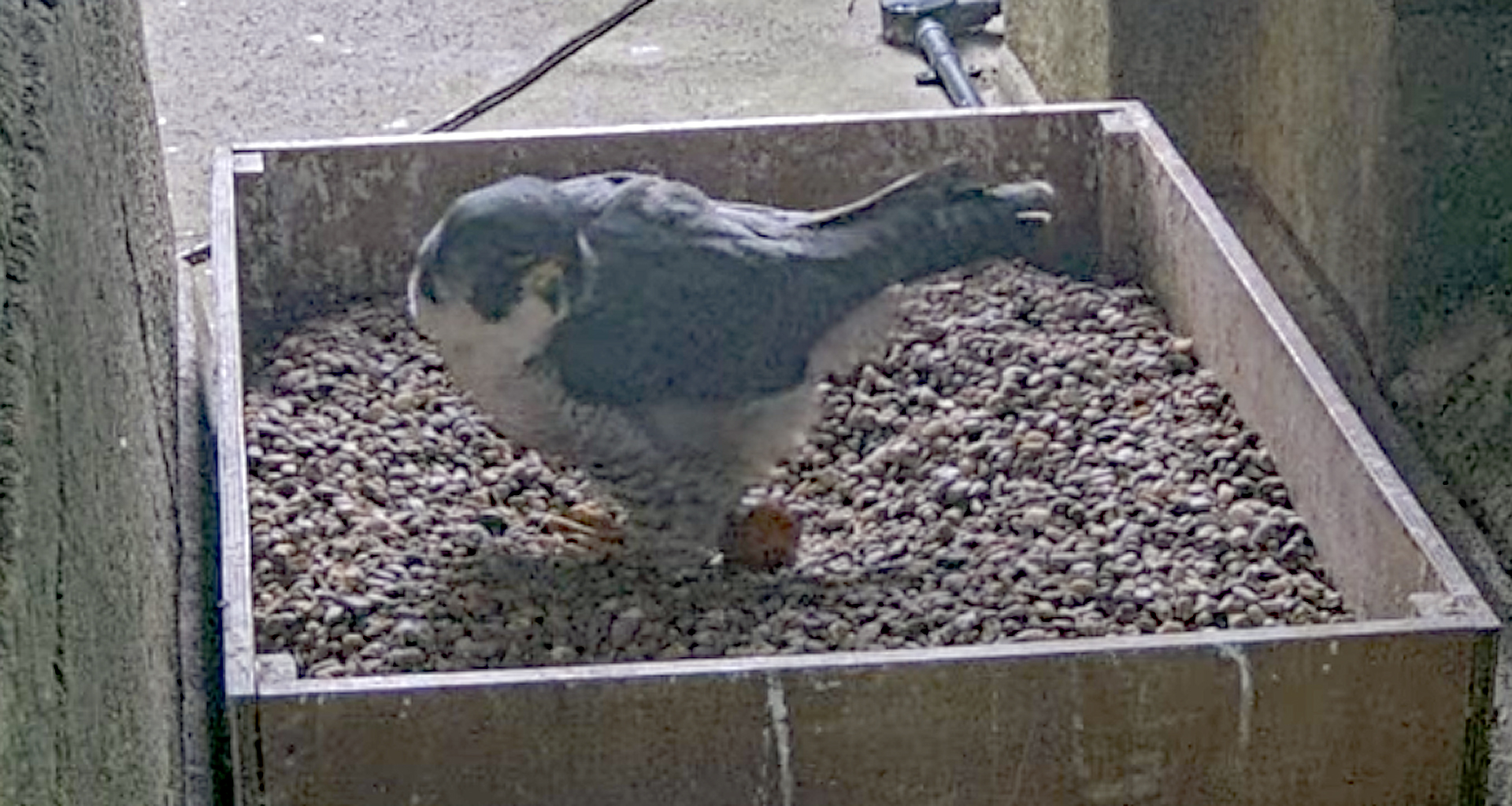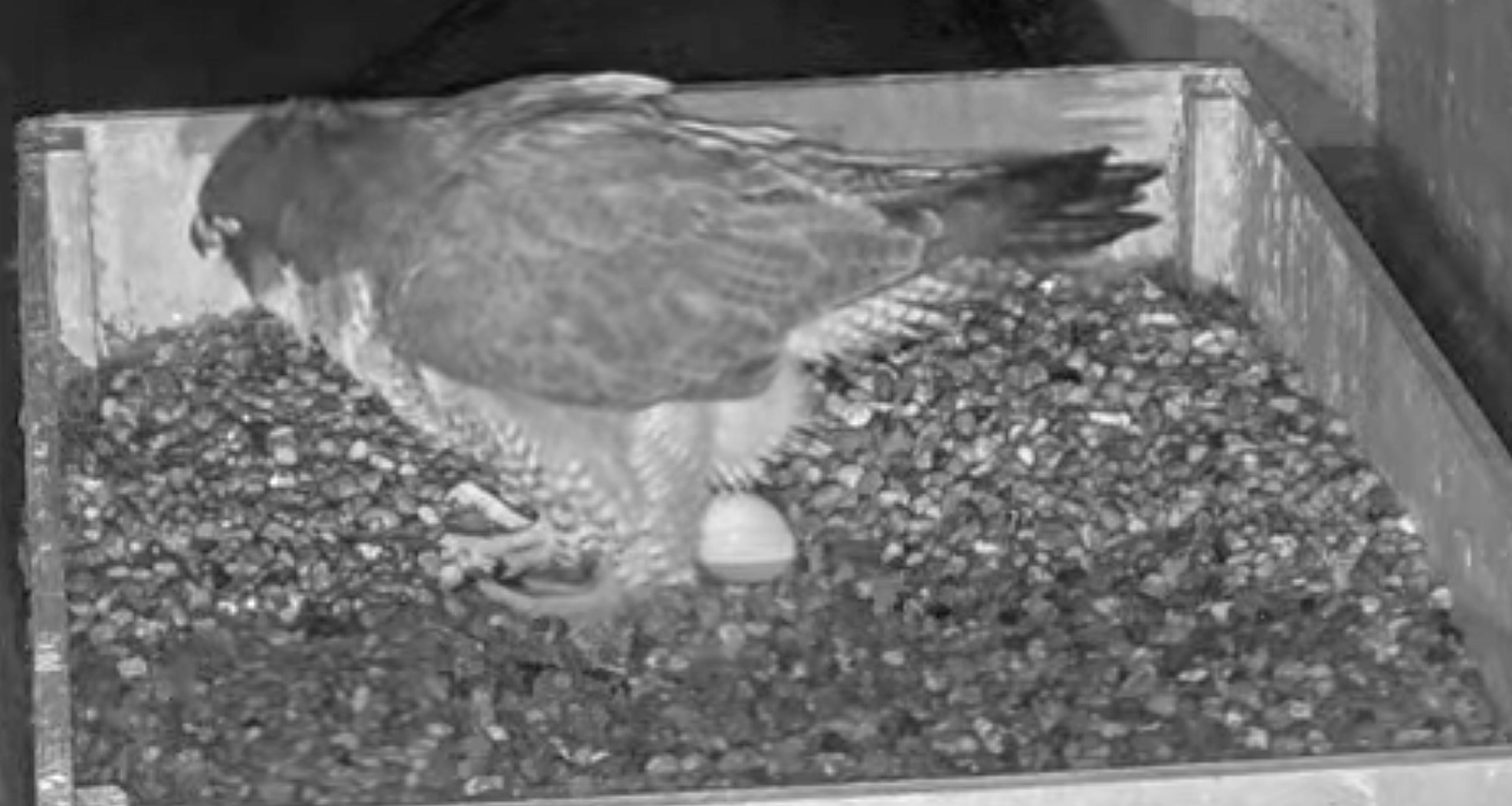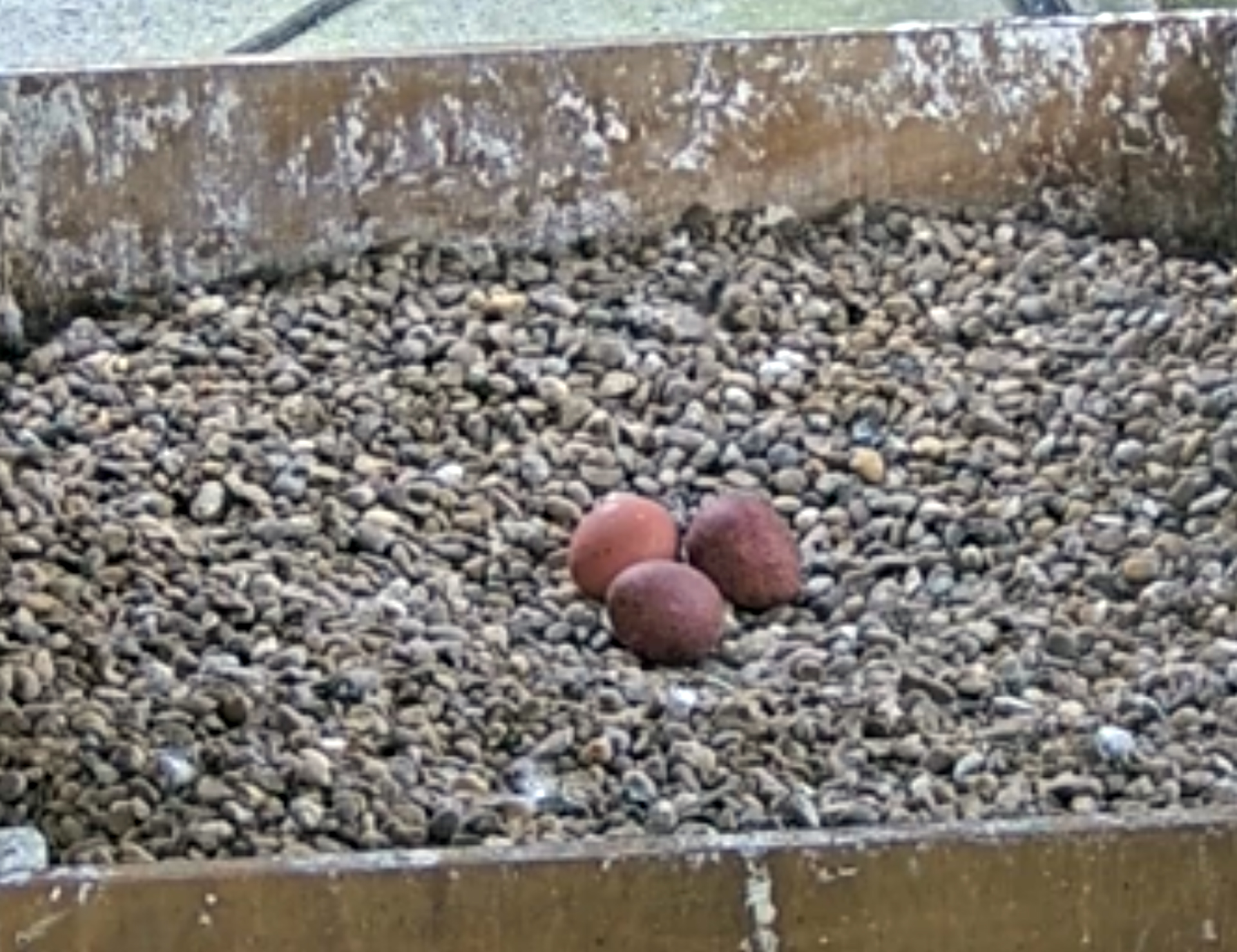2024
1 January
The pair together on the east side of the tower mid-afternoon.
1 February
The pair performed noisy courtship rituals on the lower walkway (south side) this afternoon.
Cameras to be installed next Wednesday (7th Feb).
13 February
The male visited at 16.56 with the female arriving a couple of minutes later. The usual bonding ritual ensued.
8 March
This short video shows the female on a pre-dawn visit to the nest. She is eating gravel – peregrines, like other raptors, swallow small bits of gravel/grit that act as 'teeth' in the gizzard, breaking down food and thus helping digestion. These stones are called gizzard stones or gastroliths and usually become round and smooth from the polishing action in the bird's stomach over time. When too smooth to do the required work, they may be excreted or regurgitated. The bird then finds and swallows some more rough grit.
so now you know!
12 March
A view from the live-streaming camera – a better viewpoint than the others, showing the male working on the scrape at 13.00 today.
16 March
A bonding gift. The female spent two hours on and around the nest this afternoon – watching, listening...
29 March
The first egg appeared at 20.44

1 April
Second egg at 05.10 this morning

3 April
Third egg at 13.01. The female is now incubating, so a 4th egg can be expected

5 April
Right on cue – 4th egg arrived 23.40 Friday night
4 May
The male takes over incubation duties at 13.15, but at 13.45, while settling over the eggs, he flicks one to the edge of the tray. He subsequently turns to face it, but makes no effort to retrieve it.
However, an hour later, the female returns and immediately bings the egg back with the others. Hopefully, with the warm weather, no harm will have been done. (No sound on the second video)
First chick on Tuesday?
9 May
First egg hatched at 04.20 this morning. In the image below, the hole in the shell can just be seen.

At 10.08, the male responds to an alarm as the female is seen flying around the tower with another male in tow. He leaves to investigate, giving good views of the chick.
10 May
The second chick hatched at 22.40 last night and the female ate the shell for a calcium boost.
11 May
Third chick hatched around 00.30 this morning. Only noticable when we saw the female eating the shell.
12 May
The male removes the unhatched egg at 13.30 and deposits it away from the nest, so we just have three chicks this season.
.
30 May
Chicks ringed under licence today. One definite female, possibly the other two also, we'll see as they develop. The usual complaining from the female, but the male was absent for most of the time. Chicks fed late afternoon, and several good feeds subsequently.
We would expect the chicks/juveniles to leave the nest tray in the coming week, so views on the live feed may be limited, but we have the west and east walkway cameras as a source of video clips.
The new Birds of Louth is now available from St. James gift shop, or online here

2 June
2 June
A day earlier than last year the first chick (X7T) escapes from the nest tray. After being fed by the male, the chick manages to join its siblings. Click the image to see the YouTube video
.
12 June
The juveniles are active all around the walkways now as they begin to exercise and develop their wing muscles ready for fledging in a week or so.
14 June
14 June
14 June
14 June
14 June
14 June
14 June
14 June
A rare sight now – all three juveniles being fed on the nest tray. This 15 minute video is on YouTube, click the image to access. First fledging this week?
23 June
The first of our juveniles, X7T successfully fledged early this morning and is currently resting on the nave roof. Photo from our bedroom window.
Subsequently seen to be flying strongly, it eventually landed on the lower walkway, east side, where prey was brought in for it.
18.30. Second juvenile, X6T has just fledged and landed on the rectory chimney pot. X7T still on the lower walkway.

26 June
Our third juvenile, XAT, successfully fledged at 12.45 today (photo below).

29 June
A carcass is unceremoniously dumped on the walkway

